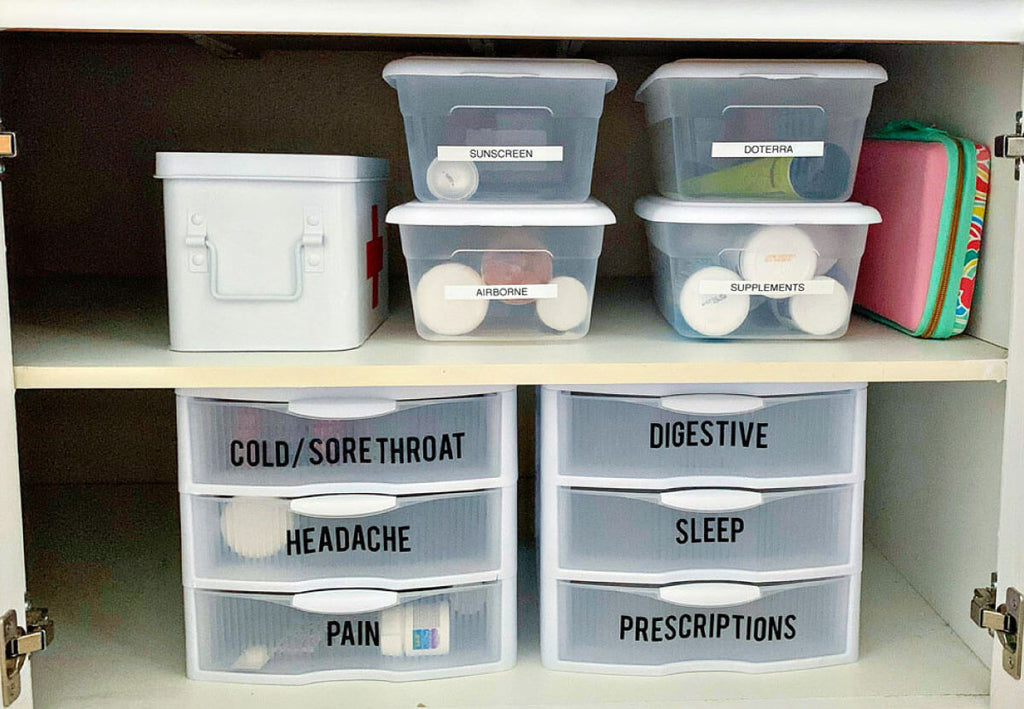Step-by-Step Guide to Organizing Your Medicine Cabinet

1. Take Everything Out
The first step to any newly-established organizing plan is to declutter the existing mess. Remove everything from the cabinet and get rid of anything that doesn’t belong in there. Carefully examine the labels of each medicine and flush or throw out the ones that have already expired. Don’t leave anything in the cabinet if you truly want an organized space, or else it’s basically like cleaning the floors, only to push all the dirt and debris under the bed.
2. Clean the Cabinet Inside Out
Over the years, a used cabinet becomes a dirty one, more so if you haven't taken the things out of it in a while. It's your cue to take over and clean every hidden spot in your medicine cabinet, both the interior and exterior. A microfiber towel and all-purpose cleaner are the only things needed for this step. Wipe off the dirt, debris, stains, and spills from the cabinet. Take your time because this really does make the difference!

3. Grouping Items Together
Before you start placing everything back in the cabinet, another helpful tip is to group them first. Organize according to types; for instance, collect cold and flu medicines in one corner, allergic medicines in another, pain killers in the next, and so on. If you don't have that many, a simple tip is to have pills on one side and syrups on another. Keep makeup, toothbrushes, floss, scissors, etc., away from the medicines. They can have their own corner later on.
4. Use Organizers
Stocking your medicine cabinet supplies in organizers can give it a cleaner look and make it easy to grab anything when you’re short on time. There are many types of organizers you can buy from online stores that fit your needs. A rule of thumb is to make the most of the space by hanging hooks or pockets on the door, installing magnetic strips, and placing drawer shelves or multi-tiered racks. If you’re not in favor of buying new organizers, use household cups, buckets, or small baskets for this purpose.
5. Label and Order
For medicines and items that aren't obvious as to what they are, labeling helps. If you're using organizers to sort through different items, you can also label them to avoid confusion when looking for something specific. Also, order the supplies according to most-used to least-used. Place the things you need daily in the front so you won't have to toss everything around looking for them in the back. Anything that you need only occasionally can be put in the back of the cabinet. The door is useful for hanging things like toothbrushes, floss, makeup supplies, etc., that you need at your fingertips.

6. Smaller is Better
It's a common perception that the bigger your organizers or containers are, the more space you have to put things in the medicine cabinet. The reality is very much the opposite of this. For small spaces, you need to make the most of every corner. Huge organizers and containers take more space than is needed. You'll miss out on tons of space that you can make good use of. Therefore, shifting items from large containers to smaller ones can maximize the storage area.
Final Take
When it comes to organizing your home, every corner matters. You can’t call your home organized if the medicine cabinet in your bathroom is in shambles. It takes an hour out of your day to organize this space and make your life simpler.


